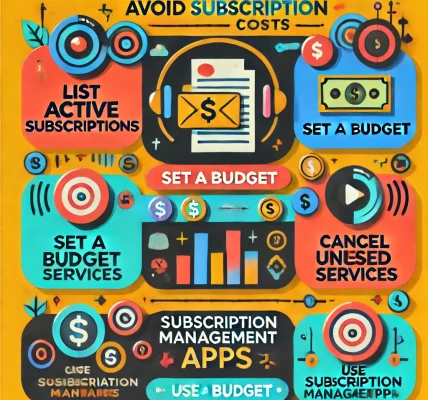📚 Introduction:
Unexpected expenses can easily derail a well-planned budget, leading to financial stress and unplanned debt. However, building a sinking fund is a proactive way to stay prepared for future expenses. A sinking fund allows you to set aside money gradually for anticipated expenses, preventing the need to dip into emergency savings or rely on credit.
This guide will explain what a sinking fund is, why it’s important, and how to create one effectively to ensure you are financially prepared for both planned and unforeseen expenses.
🎯 What is a Sinking Fund?
A sinking fund is a designated pool of money that you save regularly to cover anticipated future expenses. Unlike an emergency fund, which is for unexpected events, a sinking fund is for known or planned expenses that may occur in the future.
✅ Purpose:
- To prevent budget disruptions caused by large, irregular expenses.
✅ Key Difference from Emergency Fund:
- Sinking Fund: Planned expenses (e.g., car maintenance, vacations).
- Emergency Fund: Unexpected expenses (e.g., medical emergencies, job loss).
✅ Example:
If you know that your car insurance premium of ₹20,000 is due in 12 months, you can set aside ₹1,667 per month to have the amount ready when it’s time to pay.
📊 Why You Need a Sinking Fund
- Avoid Debt and Interest:
By saving in advance, you can pay for big-ticket items without relying on credit cards or loans. - Budgeting Becomes Easier:
Large, irregular expenses can be planned and accounted for, preventing sudden financial strain. - Peace of Mind:
Knowing that future expenses are accounted for reduces financial anxiety. - Stay on Track with Financial Goals:
A sinking fund ensures that you don’t dip into savings meant for other goals. - Prevent Last-Minute Panic:
No need to scramble for money when expenses arise.
📈 Types of Expenses Perfect for a Sinking Fund
✅ Planned Large Expenses
- Car maintenance and insurance renewal
- Home repairs or appliance replacements
- School or college fees
✅ Annual and Irregular Bills
- Property taxes
- Annual subscriptions or memberships
- Medical insurance premiums
✅ Holidays and Celebrations
- Vacation funds
- Festival shopping and gifts
- Wedding expenses
✅ Future Investments
- Down payment for a house
- Funding a business or side hustle
- Buying new gadgets or electronics
✅ Miscellaneous Goals
- Pet care and vet visits
- Hobby or fitness-related expenses
- Upcoming personal projects
🎯 Step-by-Step Guide to Building a Sinking Fund
📝 Step 1: Identify Your Future Expenses
List all the future expenses that are likely to occur within the next year or several years. Categorize them based on priority and time frame.
✅ Common Categories:
- Recurring annual expenses
- Big-ticket purchases
- Lifestyle upgrades
🚨 Pro Tip:
Consider adding a buffer for unexpected increases in costs due to inflation.
📝 Step 2: Set a Target Amount
Estimate how much money you’ll need for each expense. Be as precise as possible by considering past expenses or researching costs.
✅ Examples:
- Car maintenance: ₹10,000 annually
- Home repair fund: ₹50,000 for unforeseen repairs
- Vacation: ₹30,000 for a family trip
📝 Step 3: Calculate the Monthly Contribution
Divide the total amount required by the number of months until the expense is due. This gives you the amount you need to save each month.
✅ Formula: Monthly Contribution=Total Amount RequiredMonths Remaining\text{Monthly Contribution} = \frac{\text{Total Amount Required}}{\text{Months Remaining}}Monthly Contribution=Months RemainingTotal Amount Required
✅ Example:
If you need ₹24,000 for school fees in 12 months: ₹24,000 ÷ 12 = ₹2,000 per month.\text{₹24,000 ÷ 12 = ₹2,000 per month.}₹24,000 ÷ 12 = ₹2,000 per month.
📝 Step 4: Open a Separate Account for Sinking Funds
To avoid mixing sinking funds with your emergency or regular savings, open a dedicated account for sinking funds.
✅ Best Options:
- High-yield savings account
- Recurring deposit account
- Money market account
🚨 Pro Tip:
Use multiple sub-accounts or buckets within your account to organize different sinking fund categories.
📝 Step 5: Automate Your Savings
Set up automatic transfers to your sinking fund account to ensure consistent contributions. This reduces the risk of forgetting or skipping payments.
✅ Automation Options:
- Standing instructions via your bank.
- Auto-transfer through mobile banking apps.
📝 Step 6: Track Your Progress
Monitor the growth of your sinking fund regularly to ensure that you are on track to meet your target amount.
✅ Recommended Frequency:
- Review progress every month.
- Make adjustments if needed to account for cost increases.
🚨 Pro Tip:
Use financial apps like YNAB (You Need a Budget) or Mint to keep track of multiple sinking funds effortlessly.
💡 Pro Strategies to Maximize Your Sinking Fund
🎯 1. Prioritize High-Impact Expenses
Start with the most urgent and high-cost expenses to avoid last-minute panic.
🎯 2. Use Windfalls and Bonuses
Allocate unexpected income like bonuses or tax refunds toward your sinking fund to speed up savings.
🎯 3. Increase Contributions Over Time
If your income increases, boost your monthly contributions to reach your goals faster.
🎯 4. Reevaluate and Adjust Periodically
Review and adjust your target amounts as costs and priorities change.
🚨 Common Mistakes to Avoid with Sinking Funds
- Underestimating Expenses:
Failing to account for inflation or price changes may leave you short of funds. - Mixing Funds with Emergency Savings:
Combining different types of savings can lead to confusion and mismanagement. - Skipping Contributions:
Inconsistency in contributing can delay achieving your goals. - Ignoring Low-Interest Accounts:
Storing sinking funds in a low-yield account may result in missed growth opportunities.
📈 How to Track Multiple Sinking Funds Effectively
✅ Options for Managing Multiple Sinking Funds:
- Separate Accounts: Open multiple accounts to track different goals.
- Sub-Accounts: Use virtual sub-accounts in a single savings account.
- Budgeting Apps: Leverage tools like YNAB or Mint for digital tracking.
✅ Key Metrics to Track:
- Amount saved vs. target amount.
- Time remaining before the expense.
- Any adjustments needed based on changes in goals or income.
🎉 Conclusion: Secure Your Financial Future with Sinking Funds
A sinking fund is a smart and proactive way to prepare for upcoming expenses without jeopardizing your financial stability. By identifying future costs, setting realistic targets, and automating contributions, you can build a robust financial cushion for planned expenses. This approach ensures that you stay in control of your finances while avoiding unexpected debt or stress.




